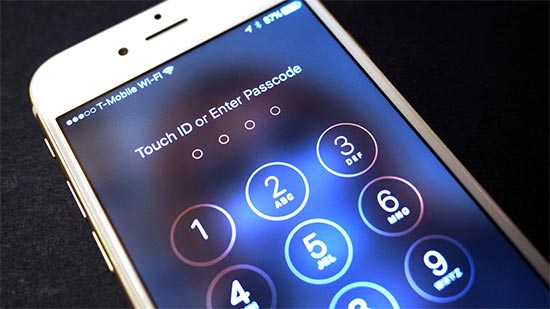Despite all the IBM i security vendors that HelpSystems has bought over the years–and there have been at least five of them–the company has lacked one key security capability valued by enterprises: encryption. With last week’s deal to acquire Linoma Software, the Minneapolis software vendor has finally obtained that encryption capability for IBM i.
HelpSystems has been experiencing heavy demand for IBM i encryption capabilities, says CEO Chris Heim. “I wouldn’t say we lost sales because of it, but we definitely wanted to offer a full solution to our customers and that’s why we wanted to check that encryption box,” he tells IT Jungle.
Linoma’s Crypto Complete provides a full-featured encryption solution for IBM i customers. In addition to providing the core encryption capability (by automating the use of IBM’s field-level encryption APIs), it also includes key management and audit trail capabilities that auditors are increasingly expecting companies to have.
Bob Luebbe, who is Linoma’s president and chief architect–and formerly its co-owner along with his wife Christy–says interest in encryption among IBM i shops is on the upswing.
“Most companies have already taken care of credit card data under PCI,” he says. “But now personally identifiable information [PII], such as birthdays and Social Security numbers, is really popular to protect. That’s what we’re seeing the most demand for.”
While there has been no new major federal laws mandating protection of PII, several states have passed state privacy laws that address PII, while HIPAA continues to drive solutions for encryption private health information (PHI). With the average cost of a data breach touching nearly $7 million, the cost of buying software and services to encrypt sensitive fields in a DB2 for i database doesn’t look nearly so bad.
“A lot of companies are being a lot more proactive than ever before,” Luebbe says. “It’s fairly inexpensive to implement encryption camped to getting a multi-million dollar price tag for remediation. Plus a lot of companies in the public eye want to maintain their customers’ trust, to ensure them that their data is being protected and secured.”
Getting the AES algorithms to encrypt and decrypt data in a DB2 for i database is one thing. You actually don’t need a third-party tool like Crypto Complete to do that, provided you’re comfortable working with IBM’s APIs (which can be complex). But increasingly, having encryption means more than that.
“Auditors are getting a lot smarter,” Luebbe says. “An auditor, when they came into your shop, they used to ask if you’re encrypting data, and you check that box. But now they’re getting more diligent. They want to know what kind of key management you have in place, who’s authored to work with those keys, where’s the audit trail, and who’s actually authorized to decrypt that information. They’re really expanding their requirement and putting a lot more pressure on shops to move just beyond calling APIs to encrypt information.”
HelpSystems also had its eye on GoAnywhere, Linoma’s line of managed file transfer (MFT) solutions that help to control the flow of data among file systems and databases running on IBM i, Linux, Windows, and many other on-premise and cloud platforms.
The GoAnywhere suite has been Linoma’s biggest seller lately, and HelpSystems will eagerly begin offering what Heim considers to be best-of-breed.
“I would probably say the encryption piece fills a bigger hole for us in our IBM i security portfolio,” Heim says. “But on cross-platform, it’s MFT. That’s been a dynamite product for Bob. We did a survey of a lot of the products out there and we think it’s the best in the industry.”
There will be few changes for Linoma going forward. The company will continue to operate out of its headquarters in Ashland, Nebraska indefinitely. Linoma’s 2,000 or so customers will get technical support in the same manner. All 32 Linoma employees will be retained; in fact, the company is hiring.
Heim first contacted Luebbe about a possible deal about a year ago, and Luebbe says initially he wasn’t interested. But after several meetings with the Minnesota native, Luebbe eventually came to the conclusion that he could use Help’s help to take Linoma to the next level.
“As we were growing, we were starting to feel the pain in our development [and support structure]. It’s hard to maintain that growth without some help,” Luebbe says. “We were also worried about business continuation if something were to happen to me.”
A similarity between the two companies’ cultures helped seal the deal. “It just felt like a bigger version of Linoma,” Luebbe says. “I love their motto: ‘Happy employees equal happy customers.’ That really drove it home for me. They really treat their people well. They have great customer service.”
Luebbe also likes that he will have HelpSystems’ large Minneapolis team available for brainstorming. “We were like our own little island in the middle of Nebraska,” he says. “It’s great that now we’re going to have a lot of great ideas to bounce back and forth between our sales team and R&D and support team.”
And now that HelpSystems is handling some of the more mundane aspects of running a software business, Luebbe will be free to spend more time with the customers and products.
“I love to give demos and work with the technical team and help design the next releases of the product. Those are the things I love,” he says. “I don’t especially love working with layers and accountants and insurance people.”
Added Heim: “We’re taking over that for him.”









